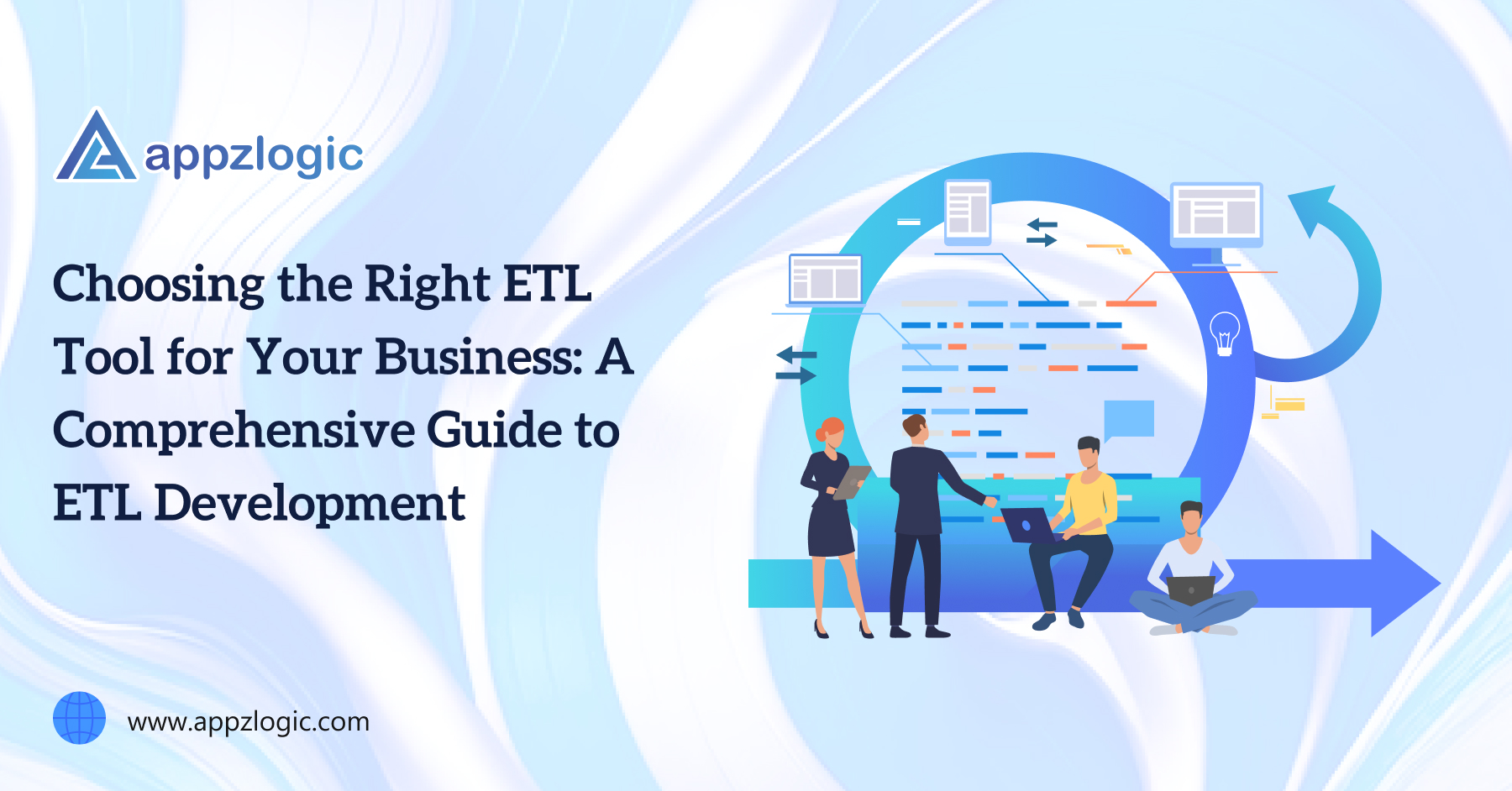Businesses are deluged with a myriad of information from diverse sources in today’s data-driven environment. Extract, Transform, Load (ETL) tools play a pivotal role in managing this data efficiently, ensuring it is relevant, accessible, and actionable. In this blog post, we’ll delve into the critical aspects of ETL development and guide you on selecting the right ETL tool for your business.
Understanding ETL Development
ETL is a process that involves extracting data from multiple sources, transforming it into a standardized format, and loading it into a target data warehouse or database. This systematic approach ensures that data is consistent, reliable, and readily available for analysis and reporting.
Key Considerations for ETL Development
- Scalability:
Scalability is crucial as your business grows. The chosen ETL tool should be able to handle increasing data volumes without compromising performance. Look for tools that can scale horizontally by adding more servers or nodes to the processing cluster.
- Data Integration Capabilities:
Evaluate the data integration capabilities of the ETL tool. It should support a wide range of data sources, including databases, cloud services, APIs, and flat files. This flexibility ensures that you can seamlessly integrate data from various platforms.
- Ease of Use:
A user-friendly interface is essential for effective ETL development. Look for tools that offer a visual design environment, allowing developers to design and manage ETL workflows intuitively. This speeds up development and lowers the learning curve.
- Performance and Speed:
Speed is of the essence in data processing. Assess the performance of the ETL tool, especially its ability to handle large datasets efficiently. Tools with parallel processing capabilities can significantly enhance speed.
- Data Quality and Transformation:
Ensuring data quality is a critical aspect of ETL development. The chosen tool should provide robust data cleansing and transformation features, allowing you to standardize and clean data as it moves through the ETL pipeline.
- Security and Compliance:
Data security and compliance are non-negotiable. Choose an ETL tool that adheres to industry standards and regulations. Look for features such as encryption, access controls, and auditing capabilities to safeguard sensitive information.
- Cost Considerations:
Examine the entire cost of ownership, taking into account expenses for upkeep, support, and licensing. Some ETL tools operate on a subscription model, while others may require a one-time purchase. Choose a solution that aligns with your budget and provides value for money.
- Community and Support:
A strong user community and reliable support are invaluable when troubleshooting issues or seeking guidance. Opt for ETL tools with an active user community and comprehensive support resources, including documentation, forums, and customer support channels.
Common ETL Tools in the Market
Now, let’s explore some popular ETL tools and their unique features:
- Apache Nifi:
Key Features: Visual design interface, data integration with ease, extensibility.
Use Case: Well-suited for organizations with diverse data sources.
- Talend:
Key Features: Open-source, extensive data integration capabilities, user-friendly.
Use Case: Ideal for businesses with complex data integration requirements.
- Microsoft SQL Server Integration Services (SSIS):
Key Features: Integration with Microsoft ecosystem, robust data transformation capabilities.
Use Case: Suitable for businesses heavily invested in the Microsoft ecosystem.
- Informatica PowerCenter:
Key Features: Enterprise-grade, scalable, comprehensive data integration and transformation.
Use Case: Best for large enterprises with complex data integration needs.
- Databricks:
Key Features: Unified analytics platform, collaborative environment, optimized for Apache Spark.
Use Case: Ideal for big data processing and analytics, suitable for organizations leveraging Apache Spark.
- Azure Data Factory (ADF):
Key Features: Cloud-based ETL service, fully managed, integration with Azure services.
Use Case: Well-suited for organizations using the Microsoft Azure cloud platform.
- Amazon Glue (AWS Glue):
Key Features: Fully managed ETL service, serverless, integrates with various AWS services.
Use Case: Ideal for businesses utilizing the Amazon Web Services (AWS) cloud platform.
ELT and Cloud Technologies: Enhancing ETL Development in the Digital Era
As technology evolves, so does the landscape of Extract, Transform, Load (ETL) development. An emerging trend in the realm of data integration is the shift towards ELT (Extract, Load, Transform) methodologies, often complemented by cloud technologies. ELT reverses the traditional ETL process by first loading raw data into a data lake or cloud storage and then applying transformations as needed. This approach leverages the scalability and processing power of cloud platforms like Azure and AWS.
Cloud technologies, such as Microsoft Azure and Amazon Web Services (AWS), have revolutionized the ETL space. They offer scalable and flexible storage solutions, parallel processing capabilities, and serverless architectures that can handle vast amounts of data with ease. Integrating cloud-based ETL services like Azure Data Factory and Amazon Glue into your workflow provides the agility needed to adapt to changing business requirements and ensures optimal performance.
Incorporating ELT and cloud technologies into your ETL strategy empowers your business to efficiently handle the growing volumes of data generated daily. It aligns with the principles of scalability, speed, and cost-effectiveness, making it a strategic choice for organizations looking to future-proof their data management processes. As you navigate the diverse landscape of ETL tools, considering the compatibility and integration capabilities with ELT and cloud technologies becomes increasingly crucial, opening new avenues for innovation and efficiency.
Conclusion
Selecting the right ETL tool is a pivotal decision that directly influences the efficiency and effectiveness of your data management processes. By considering scalability, data integration capabilities, ease of use, performance, data quality, security, cost, and community support, you can make an informed choice tailored to your business needs.
In the realm of ETL development, the right tool empowers you to harness the full potential of your data, driving informed decision-making and contributing to the overall success of your business. Choose wisely, and embark on a journey towards seamless data integration and transformation.




